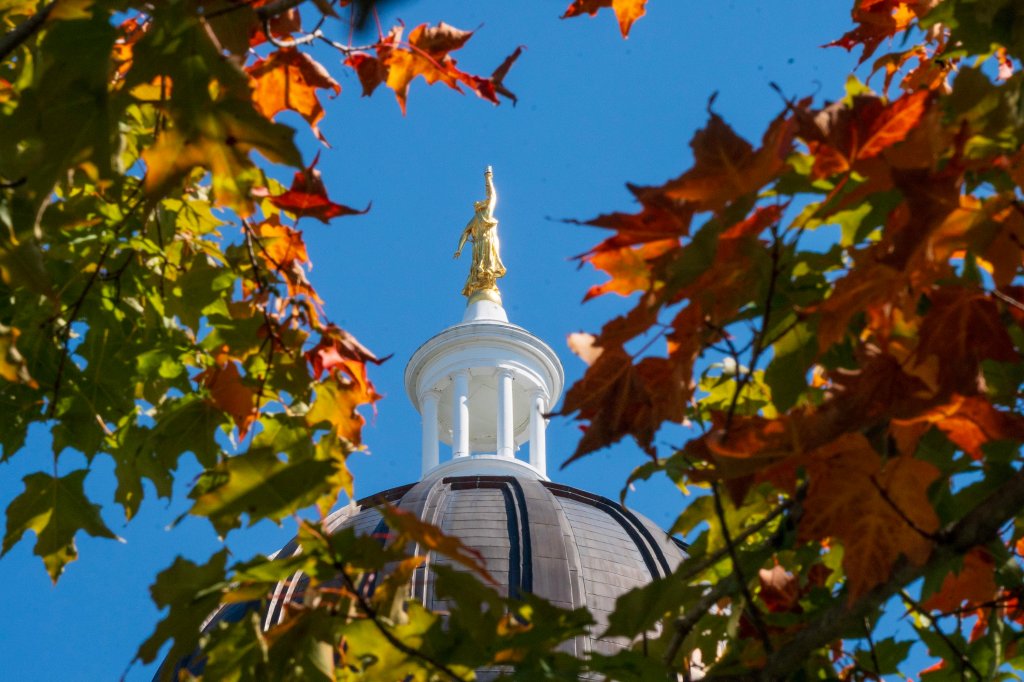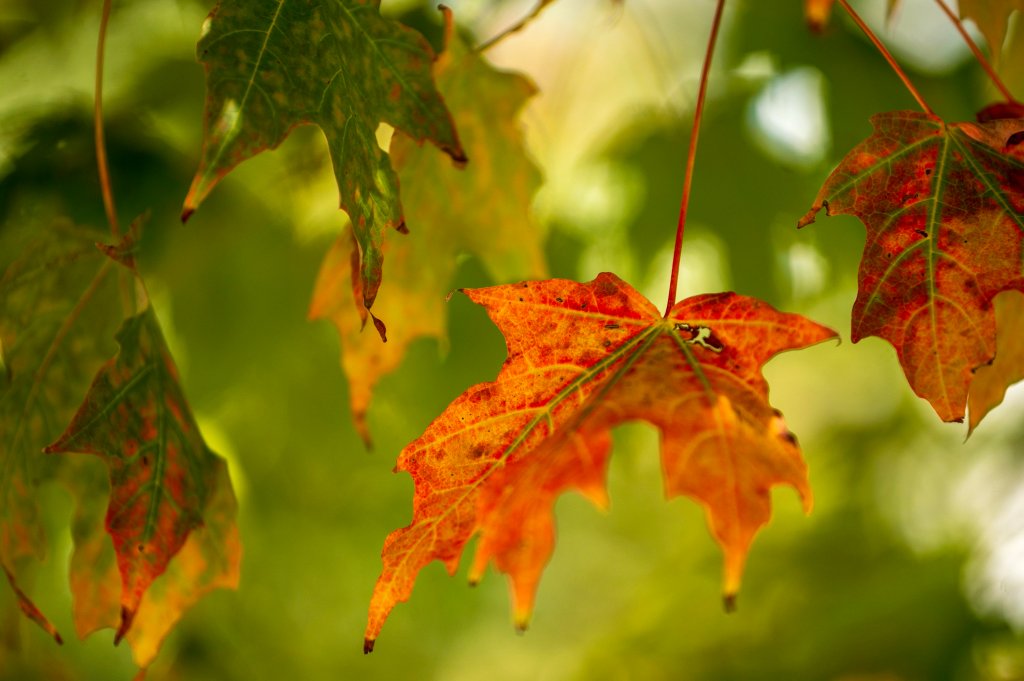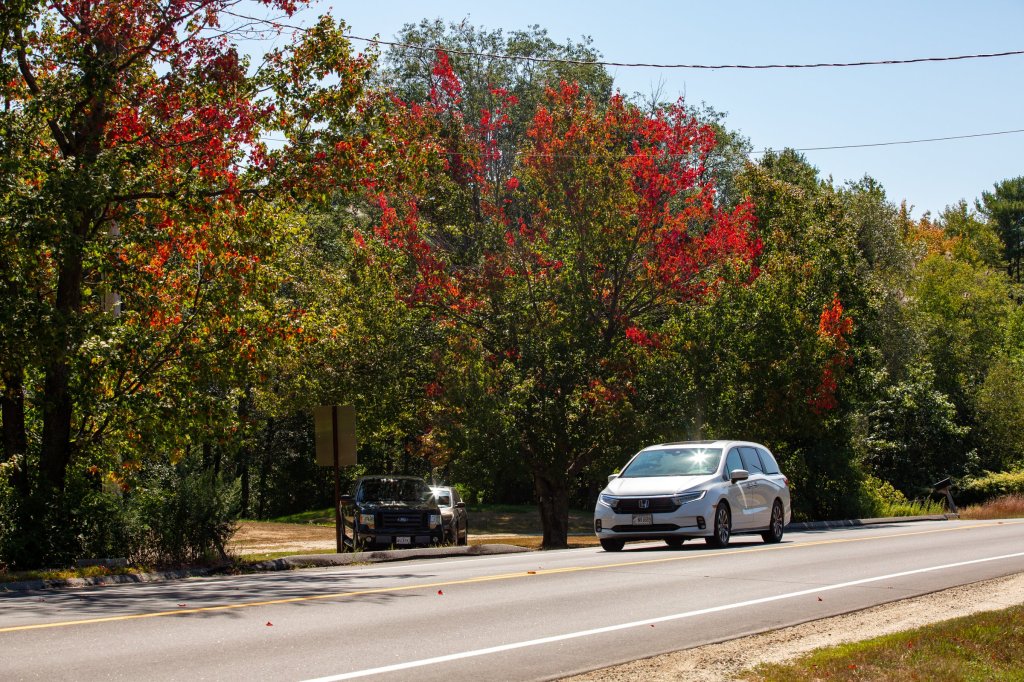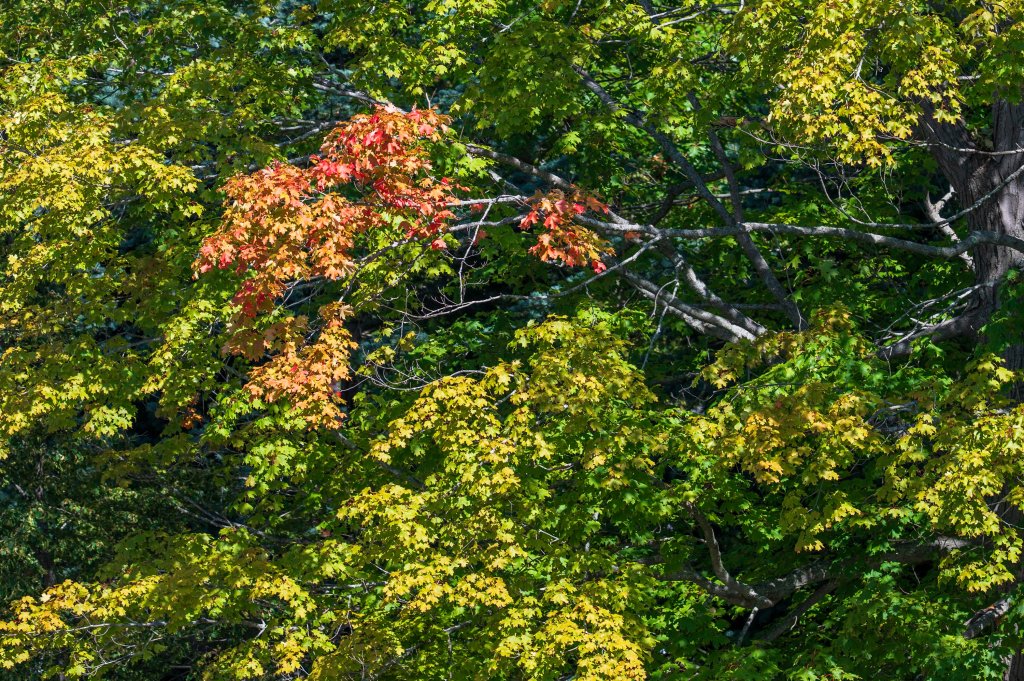
Maine’s drought has worsened for weeks, fueling an unusually high number of wildfires in August. Now it’s threatening to dampen the fiery leaves Maine is known for in the fall.
More than 85% of the state is considered at least abnormally dry, and roughly 62% is facing some level of drought, with only the northernmost parts of Somerset, Piscataquis and Aroostook counties spared, according to new data released Thursday by the U.S. Drought Monitor. Over half the state, including most of southern Maine, is in a severe drought.
Maine’s drought is among the most severe in New England, according to the drought monitor. This meteorological summer — June, July and August — was one of the driest on record for Portland, which got nearly 6 fewer inches of rain than the average over that stretch.
The weekslong dry spell could dull some of Maine’s typically brilliant leaves, said Gale Ross, a foliage spokesperson with the state Department of Agriculture, Conservation and Forestry.
“This year, while the colors will still bring beauty across the state, the drought conditions may temper some of the brilliance and shorten the duration of peak foliage in certain areas,” Ross said. “However, summer conditions are only part of the picture. The actual intensity and timing of foliage colors depend heavily on the weather going forward.”
Jon Palmer, a meteorologist at the National Weather Service office in Gray, said there are three key “environmental cues” for trees to lose their leaves: shorter days, cooler temperatures and heightened rainfall.
“So if we have a wetter summer, where we have really moist soil moisture, we can see lighter and brighter colors in the fall,” Palmer said. “If we have a drought, then the colors are likely to change quicker, and they might not be as be as bright as you might have seen them in previous years.”
Maine could see “some meaningful rainfall” this weekend, Palmer said. But it may not be enough to wet the soil, and things are expected to dry out again next week, he said.

COOL NIGHTS MEAN WARM COLORS
The Department of Agriculture, Conservation and Forestry publishes an annual foliage map, which is updated each week to show where the leaves are approaching, at or past their peak. This year’s first edition comes out next week.
“Despite drought stress, Maine’s mix of sunny days and cooler nights heading into September is ideal for producing strong fall colors,” Ross said. “Cooler nighttime temperatures and shorter days in early fall are what truly enhance and accelerate the progression of color.”
As leaves decay, their color and vibrancy depend on the amount of sugars produced and trapped inside. The combination of bright light and excess plant sugars triggers production of anthocyanin — the chemical responsible for red hues in leaves and in fruits like cranberries and apples — according to the U.S. Forest Service.
Typically, trees attempt to reabsorb excess sugars into their branches and trunk, where they can be stored through the winter. But cold temperatures, especially on chilly nights, slow that transfer, said William Livingston, associate professor of forest resources at the University of Maine.
“The most vibrant colors are really dependent on the nights,” Livingston said.
Without a good run of cool nights, leaves can turn from green to brown, dulling or skipping their usual reds and oranges altogether, Livingston said.
But Livingston said consistently cool nights paired with rain could help bring out the color in the coming weeks. Colors depend more heavily on the weather at the time they are changing than they do the conditions leading up to the change, he said.
“So I would not rule out the chance of a very colorful fall,” he said.

Livingston lives in Bangor, where he said the first colors usually begin to appear in early October.
“The drought could cause that to come a little bit earlier,” Livingston said. “But also, if we start getting rain to where the trees can recover a bit and the leaves can resume their normal functioning, that could build up the sugars.”
He noted that different parts of Maine are home to different varieties of trees, which can also determine the color and vibrancy of foliage.
Ross, the foliage spokesperson, said maple, birch and beech trees — the state’s most common trees by acreage — tend to have shallower root systems and higher demands for water, leaving them more vulnerable to changes in rainfall.
“Oaks have deeper roots and better access to soil moisture, so they tend to be more resilient,” she said.

DEEPENING DROUGHT
Palmer, the meteorologist, expects the statewide drought to continue worsening in the short term. He noted that the drought has expanded from Down East and Midcoast Maine to western parts of the state.
“We are expecting the drought to worsen as we head into the fall,” he said.
In a severe drought, air and water quality are typically poor, groundwater levels drop and irrigation ponds run dry. Some crops are affected in both yield and size, warnings are issued regarding outdoor burning, golf courses begin to conserve water, and trees become brittle, according to the drought monitor.
In moderate drought areas, wildfires and ground fires increase, honey production declines, hay and grain yields are lower than normal, and trees, landscaping and fish are stressed, according to the drought monitor. People may be asked to voluntarily conserve water because reservoir and lake levels are below normal capacity.

Nearly 1.2 million Maine residents have been living in drought-stricken areas over the past few weeks, according to the monitor.
There were more than 200 wildfires across Maine in August, the most in the past 20 years, according to the Maine Forest Service.

We invite you to add your comments. We encourage a thoughtful exchange of ideas and information on this website. By joining the conversation, you are agreeing to our commenting policy and terms of use. More information is found on our FAQs. You can modify your screen name here.
Comments are managed by our staff during regular business hours Monday through Friday as well as limited hours on Saturday and Sunday. Comments held for moderation outside of those hours may take longer to approve.
Join the Conversation
Please sign into your CentralMaine.com account to participate in conversations below. If you do not have an account, you can register or subscribe. Questions? Please see our FAQs.